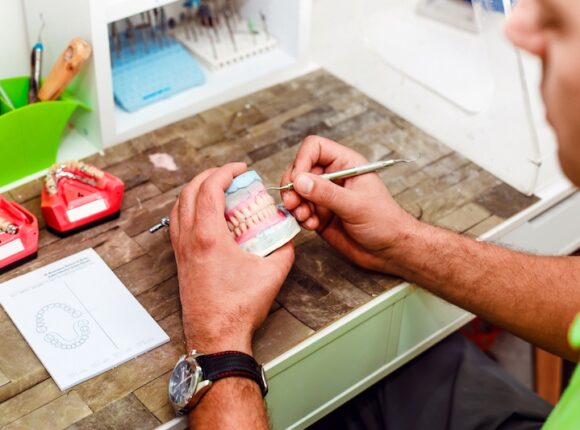[cmsmasters_row data_width=”boxed” data_top_style=”default” data_bot_style=”default” data_color=”default” data_padding_bottom=”15″ data_shortcode_id=”ssfwfnc8zc”][cmsmasters_column data_width=”1/1″ data_shortcode_id=”5161e5ffbd”][cmsmasters_text shortcode_id=”hero0hrt7q”]
Patients may see the presence of white stuff in the extraction site as part of the healing process. During tooth extraction healing white stuff will start to form.
Along with the typical dental operation of extracting a tooth might result in some swelling and pain thereafter. A tooth extraction generally results in a recovery period of seven to ten days. During this time, the patient may feel a variety of symptoms in the region where the tooth was removed.
[/cmsmasters_text][/cmsmasters_column][/cmsmasters_row][cmsmasters_row data_width=”boxed” data_top_style=”default” data_bot_style=”default” data_color=”default” data_padding_top=”0″ data_padding_bottom=”0″ data_shortcode_id=”kde7kjjjd”][cmsmasters_column data_width=”1/1″ data_bg_position=”top center” data_bg_repeat=”no-repeat” data_bg_attachment=”scroll” data_bg_size=”cover” data_border_style=”default” data_animation_delay=”0″ data_shortcode_id=”7030937105″][cmsmasters_heading shortcode_id=”a4zvsx1ted” type=”h3″ font_weight=”default” font_style=”default” text_align=”left” margin_top=”40″ margin_bottom=”25″ animation_delay=”0″]Tooth Extraction Healing White Stuff?[/cmsmasters_heading][cmsmasters_text shortcode_id=”ma2d8xjvf” animation_delay=”0″]
Have you ever noticed little white bumps on your skin? You may have wondered what these little bumps are called and why they appear. Well, the answer to that is granulation tissue, and it’s actually quite common.
[/cmsmasters_text][cmsmasters_heading shortcode_id=”4h8sw3anz” type=”h3″ font_weight=”default” font_style=”default” text_align=”left” margin_top=”0″ margin_bottom=”20″ animation_delay=”0″]What Causes Granulation Tissue to Form?[/cmsmasters_heading][cmsmasters_text shortcode_id=”id6rjjfbmf” animation_delay=”0″]
Granulation tissue is a type of tissue development that often develops during the healing phase of a wound and is made up of recently created connective tissue and microscopic blood vessels. It is the initial indication that a wound is healing and has a bright pink, lumpy, granular look.
The macrophages, fibroblasts, and freshly produced capillaries that give granulation tissue its brilliant pink hue are called capillaries. It is crucial because it aids in healing the area and provides a surface for the growth of new skin cells. Granulation tissue, a symptom of wound healing, can show if the wound is healing adequately. Tooth extraction healing white stuff is completely normal.

As part of the body’s normal healing process, granulation tissue forms, and the body sends signals when a wound occurs to create new cells to heal the area. Collagen and other vital proteins are present in these new cells, which are crucial for wound healing. These fresh cells develop into granulation tissue, which aids in bridging the gap between the unhealthy tissue and the injured tissue.
[/cmsmasters_text][cmsmasters_heading shortcode_id=”bartzc2xvq” type=”h3″ font_weight=”default” font_style=”default” text_align=”left” margin_top=”0″ margin_bottom=”20″ animation_delay=”0″]Reasons for Tooth Extraction[/cmsmasters_heading][cmsmasters_text shortcode_id=”ufz4a3w2u3″ animation_delay=”0″]
Tooth extraction is a common dental procedure that may be necessary for a variety of reasons. In some cases, a tooth may need to be extracted because of the following reasons:
[/cmsmasters_text][cmsmasters_text shortcode_id=”mmhhqx0kn” animation_delay=”0″]
- Tooth decay that has progressed too far for filling
- Impacted teeth
- Crowded mouth and alignment issues
- Risk of infection
- Injury or trauma to the tooth
[/cmsmasters_text][cmsmasters_heading shortcode_id=”1dqrbk9pyb” type=”h3″ font_weight=”default” font_style=”default” text_align=”left” margin_top=”0″ margin_bottom=”20″ animation_delay=”0″]Preparation for a Tooth Extraction[/cmsmasters_heading][cmsmasters_text shortcode_id=”dkujv401y” animation_delay=”0″]
Preparation for a tooth extraction requires careful evaluation by a dentist or oral surgeon. Depending on the complexity of the extraction, the patient may need to obtain an x-ray prior to the procedure. The dentist will assess the patient’s medical history and any current medications they may be taking.
Other pre-procedure evaluations may include a physical exam, laboratory tests, or an electrocardiogram. The patient should also alert the dentist to any allergies they may have, as this could affect the type of anesthesia used during the extraction. The dentist will provide the patient with pre-operative instructions, and the patient should follow all instructions carefully. In some cases, antibiotics may be prescribed in order to prevent infection after the procedure. With careful preparation, tooth extraction can be completed safely and effectively.
[/cmsmasters_text][cmsmasters_heading shortcode_id=”4vizxv2crp” type=”h3″ font_weight=”default” font_style=”default” text_align=”left” margin_top=”0″ margin_bottom=”20″ animation_delay=”0″]Aftercare for a Tooth Extraction[/cmsmasters_heading][cmsmasters_text shortcode_id=”40a55wg0yf” animation_delay=”0″]
Aftercare for tooth extraction is an important part of the recovery process. Patients should maintain a soft food and liquid diet for the first 24 hours, avoiding small seeds, nuts, popcorn, and other hard or crunchy foods. The patient should also avoid hot liquids or foods, as this can cause swelling. Adequate hydration is recommended to maintain proper salivation, as well as to reduce the risk of infection. Patients should rinse their mouths gently with warm salt water several times a day and refrain from smoking or using straws.
Discomfort can be managed with the use of over-the-counter pain medications like ibuprofen and acetaminophen unless otherwise directed by a health care provider. Patients should also keep the extraction site clean by brushing and flossing gently around the area. If any signs of swelling, pain, redness, or other symptoms arise, the patient should contact their dentist immediately for further evaluation and treatment. Following the aftercare instructions and consulting a dentist is essential for a successful recovery from a tooth extraction.
[/cmsmasters_text][cmsmasters_heading shortcode_id=”qq2s179wxg” type=”h3″ font_weight=”default” font_style=”default” text_align=”left” margin_top=”0″ margin_bottom=”20″ animation_delay=”0″]Potential Complications of Tooth Extractions[/cmsmasters_heading][cmsmasters_text shortcode_id=”eoossjptgl” animation_delay=”0″]
Tooth extractions can result in complications that may cause more discomfort or delay healing. Potential complications of tooth extractions include infection, dry socket, sinus complications, nerve damage, and excessive bleeding. Infection can occur when bacteria from the mouth enter the wound, resulting in swelling, pain, and fever. A dry socket occurs when a blood clot fails to form in the socket, resulting in infection and pain.
Sinus complications may arise if the tooth is close to the sinus cavity. Nerve damage is a rare complication that involves numbness or tingling in part of the lip, chin, or tongue. Excessive bleeding is another complication that can occur after tooth extraction and may require further medical attention. To reduce the risk of complications, it is important to follow post-operative instructions and keep the extraction site clean.
Before deciding to proceed with tooth extraction, it is important to discuss the procedure with your dentist and understand all the risks and benefits associated with it. With the right preparation and a skilled dentist, tooth extraction can be a successful and rewarding experience.
[/cmsmasters_text][/cmsmasters_column][/cmsmasters_row]
